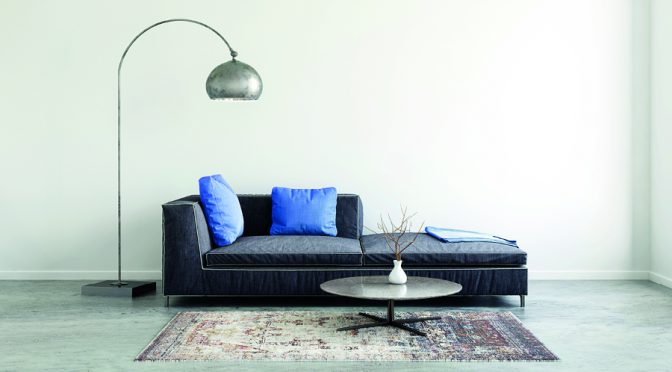What to do when your snow remover has damaged your property while performing their duties? Here are our tips![……]
AD
Follow these tips to find a productive living space, thanks to the efficient method popularized by the famous Japanese personality Marie Kondo.[……]
The numbers are staggering and the history behind it makes your head spin. According to Guinness World Records, the [……]
Calling them skyscrapers would be a bit pretentious. They are just 72 metres or 18 storeys high. They do not have a revolutionary design and they are not breathtaking. So why are they so intriguing? Because they are musketeers in their soul. “It’s all for one and one for all.” These buildings come in a package of five or they don’t come at all. And there have curtains too.
The official name of this real estate complex is Hötorgsskraporna, which translates into scrapers or Höterget Buildings, but the people of Stockholm affectionately call them the five trumpet blasts.
[caption id="attachment_12280" align="alignright" width="560"] Hötorgsskraporna by night (its popular name) by Holger Ellgaard on French Wikipedia[/caption]
Hötorgsskraporna by night (its popular name) by Holger Ellgaard on French Wikipedia[/caption]
Driven by renewal at the time, the authorities replaced an entire neighbourhood, destroying historical buildings and replacing them with modern ones. The idea to create “brother” buildings surged within the team. They just had to decide on the number.
Four was proposed. An indignant architect: “One offers a lady five roses, not four.” It was a powerful argument, since they finally settled on five.
When the Swedish architects presented the project to the municipal administration, the mayor’s assistant was carried away by emotion. “For me, this urban project evokes the creative power of Man and his belief in the future, five major chords, five trumpet blasts in a Handel score,” he said. Handel is a composer known for his use of brass instruments.
The five buildings were erected one after another between 1952 and 1966. Look closely at the façades of each building. They may seem like nothing to you, but this type of façade was not very widespread at the time. Each one is a curtain wall.[……]
 Burj Khalifa – iStockphoto[/caption]
Burj Khalifa – iStockphoto[/caption]
Those who are passionate about futuristic architecture are very familiar with silver, this grey that is clearer than classic grey. Maybe they venerate it. It’s because this colour is closely linked with the most innovative constructions of the last few years. Why? Because most of them are composed of stainless steel, and sometimes titanium and aluminium, all metals that emit a silvery shimmer.
Chrome, which is used in stainless steel alloys to prevent corrosion, gives steel its silver sheen.
We took a look at futuristic projects that are in the construction phase: homes, apartment buildings, museums, hotels. Stainless steel and glass are omnipresent.
To help you imagine the buildings that will soon see the light of day, let’s look at more recent buildings. There are too many for us to name them all, but here are the most spectacular:
In Dubai, the silver of the Burj Khalifa bursts under the dessert sun. This architectural extravagance of this Persian Gulf country, which you see in the photo, has a strong futuristic accent. At 828 meters, the highest human structure ever built, the building projects shiny silver, steel and glass in the sky of the Arab country.[……]
It happened in Val d’Or. Unable to sleep, Geneviève gets up at dawn. She jumps into her slippers and walks to the window. She opens the curtain and contemplates the sky. Day breaks. Not a sound. Everything is quiet. Then bang ! A huge clap of thunder followed by a blinding light in the sky. Then the window shatters. Screaming, Geneviève brings her hands to face. She is bleeding.
Robert wakes up startled. He heard the thunder, the windows shattering, Geneviève screaming. Then a second bang, a third, a fourth, a fifth. One per second for twelve seconds.
Robert runs to the living room. All of the windows on the side were shattered. There are shards all over the floor. Geneviève’s face is covered in blood. The children are crying upstairs. The entire family jumps into the car and heads to the hospital.
On the way, Robert sees dozens of shattered windows. He sees people coming out of their houses and looking at the sky. The roof of the factory that he drove by every day had collapsed. All of the windows were broken.[……]
The closest one to us is the John P. Robarts Research Library, on the campus of the University of Toronto. It has been given a fitting nickname: the Fort Book.
[caption id="attachment_11882" align="alignright" width="580"] Toronto University John P. Robarts Research Library. Photo: iStockphoto[/caption]
Toronto University John P. Robarts Research Library. Photo: iStockphoto[/caption]
The massive tower that rises in front of the main façade looks a lot like a pillar of defence. The use of concrete as the primary material enhances the effect of mass. The building has been used as a stand-in in movies for a prison, a zombie-infested space and a crossing point for extraterrestrials.
A caveat however: You will notice the numerous vertical lines that draw the eyes upward. Since the windows are also vertical, a Wikipedia article refers to the building as if it “transported the scholars anxious to escape the noise and turmoil of the vulgar press into a dream palace enshrining its holy mysteries.”
Continuing with the strange and mysterious, have you read Umberto Eco’s In the Name of the Rose? He wrote a good part of this classic detective story in this library. According to Wikipedia, he used the library as inspiration to describe the secret library in his novel.[……]


